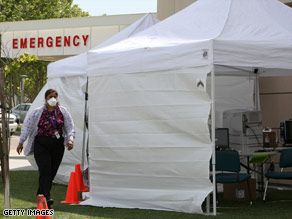May 4, 2009
Forever Young
Posted by Athena Andreadis in categories: biological, biotech/medical, futurism, human trajectories, media & arts, space
(Crossposted on the blog of Starship Reckless)
Eleven years ago, Random House published my book To Seek Out New Life: The Biology of Star Trek. With the occasion of the premiere of the Star Trek reboot film and with my mind still bruised from the turgid awfulness of Battlestar Galactica, I decided to post the epilogue of my book, very lightly updated — as an antidote to blasé pseudo-sophistication and a reminder that Prometheus is humanity’s best embodiment. My major hope for the new film is that Uhura does more than answer phones and/or smooch Kirk.
Coda: The Infinite Frontier
 A younger science than physics, biology is more linear and less exotic than its older sibling. Whereas physics is (mostly) elegant and symmetric, biology is lunging and ungainly, bound to the material and macroscopic. Its predictions are more specific, its theories less sweeping. And yet, in the end, the exploration of life is the frontier that matters the most. Life gives meaning to all elegant theories and contraptions, life is where the worlds of cosmology and ethics intersect.
A younger science than physics, biology is more linear and less exotic than its older sibling. Whereas physics is (mostly) elegant and symmetric, biology is lunging and ungainly, bound to the material and macroscopic. Its predictions are more specific, its theories less sweeping. And yet, in the end, the exploration of life is the frontier that matters the most. Life gives meaning to all elegant theories and contraptions, life is where the worlds of cosmology and ethics intersect.





 I wrote an essay on the theme of the possibility of artificial initiation and fusion explosion of giants planets and other objects of Solar system. It is not a scientific article, but an atempt to collect all nesessary information about this existential risk. I conclude that it could not be ruled out as technical possibility, and could be made later as act of space war, which could clean entire Solar system.
I wrote an essay on the theme of the possibility of artificial initiation and fusion explosion of giants planets and other objects of Solar system. It is not a scientific article, but an atempt to collect all nesessary information about this existential risk. I conclude that it could not be ruled out as technical possibility, and could be made later as act of space war, which could clean entire Solar system.








